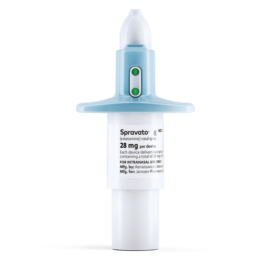Isolated from extracts of Podocarpus latifolius, cycloinumakiol (1) exhibits a distinct proposed chemical structure from other natural products in the tricyclic inumakiol family. (29) In particular, it shows an unusual tetracyclic skeleton featuring a dihydrofuran ring and a quaternary carbon center. From a retrosynthetic aspect (Scheme 18A), (10a) we envisioned that the isopropyl group on the phenyl ring could be introduced by late-stage arene functionalization, and the tetracyclic core could be constructed via the cut-and-sew reaction with a cyclohexene-tethered benzocyclobutenone. In a forward manner, the benzocyclobutenone substrate (74) was efficiently prepared from the Mitsunobu reaction between phenol 75 and alcohol 76. To enable a highly challenging insertion of a sterically hindered trisubstituted alkenyl group, an electron-deficient [Rh(CO)2Cl]2/P(C6F5)3 catalyst was found to be optimal for this cut-and-sew reaction. With tetracycle 73 in hand, the isopropyl group was installed by a site-selective bromination and a one-pot Suzuki coupling/hydrogenation. After some end-game manipulations, the first total synthesis of the proposed structure of cycloinumakiol (1) was completed in nine steps from compounds 75 and 76, whose structure was unambiguously determined by X-ray crystallography. This effort also let us elucidate the actual structure of cycloinumakiol, which was reassigned to 19-hydroxytotarol.
.

Isolated from the seeds of Ipomoea hildebrandtii by Hofmann and co-workers in 1969 (30) and later from Aspergillus japonicas in 1982, (31) cycloclavine (2) is a unique member in the ergot alkaloid family because it processes a penta-cyclic core with a unique [3.1.0] structural motif. The sterically congested cyclopropane ring and three contiguous chiral centers including two adjacent quaternary carbons constitute additional challenges for the asymmetric total synthesis of cycloclavine. We envisioned a late-stage reductive amination tactic to construct the pyrrolidine D ring, a rhodium-catalyzed cyclopropanation to form the E ring, and an asymmetric cut-and-sew reaction to build the 6–6–5 fused A/B/C core structure (Scheme 19A). (3) In a forward manner, the cut-and-sew precursor benzocyclobutenone 82a was prepared in high yield from commercially available diphenol 83 in three steps (Scheme 19B). After detailed condition optimizations, the combination of cationic rhodium [Rh(COD)2]BF4 and DTBM-segphos was most efficient, giving the desired ketone 81a in 95% yield and 97.5% e.e. This condition also appears to be quite general to access other nitrogen-containing tri- and tetracycles in high yields and excellent enantioselectivity (Scheme 19C). After the cut-and-sew step, the diazo-transfer followed by a Rh-catalyzed diastereoselective cyclopropanation (32) of 2-methylallyl chloride 85 delivered the desired cyclopropane product 80 with good diastereoselectivity. In the end game, the SN2-substitution with azide, Boc deprotection and indoline oxidation gave indole 86. A one-pot aza-Wittig/reduction/reductive amination delivered (−)-cycloclavine (2) in 78% yield and >20:1 diastereoselectivity. In summary, this C–C activation-based approach accomplished the asymmetric total synthesis of (−)-cycloclavine in only 10 steps with 30% overall yield.


Recent Comments